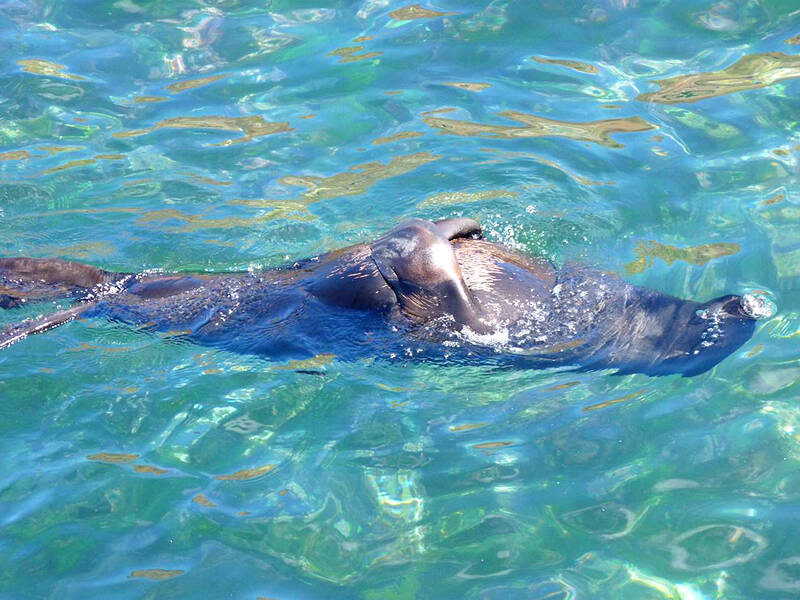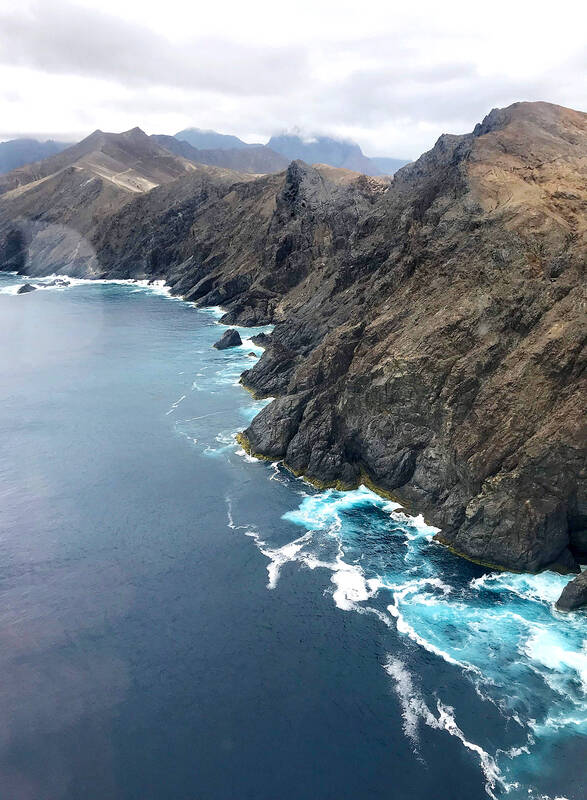A creature that humans came very close to obliterating now offers hope that we may be able to find ways to tackle one of the most pernicious environmental poisons, say scientists.
Their research has revealed that one of the world’s most isolated aquatic mammals, Arctocephalus philippii, can tolerate high levels of cadmium, as well as other metallic pollutants without suffering ill effects.
A. philippii is the second smallest species of fur seal and lives only on the Juan Fernandez archipelago and one or two nearby islands in the Pacific Ocean, hundreds of miles off the coast of Chile. It was here that sailor Alexander Selkirk was marooned from 1704 to 1709, an experience that was fictionalized by Daniel Defoe in Robinson Crusoe — after whom the archipelago’s main island is now named.

Photo courtesy of Patricio Novoa Quezada
In the early 18th century, the shores of Robinson Crusoe island teemed with Juan Fernandez seals. However, the animals were hunted for their fur and meat with such vigor that around 4 million are now thought to have been slaughtered. By the 19th century, the species had disappeared and was believed to be extinct until, in the 1960s, a small colony was found in a cave on the island.
Since then, the Juan Fernandez seal, which has become a protected species, has slowly recovered and has a population of around 80,000 living on the island’s rocky shores, according to the most recent figures. Adults forage at sea while pups are born in November and December with soft black fur that fades to light brown in a few years.
Little else was known about the seal’s detailed biology until scientists began studying it in detail recently — making some startling discoveries in the process.

Photo: AFP
“We collected samples of their feces and found they contained extremely high levels of cadmium and other elements such as mercury,” Constanza Toro-Valdivieso of Cambridge University’s conservation research institute said.
“The discovery was very surprising,” she added. “Cadmium is poisonous to mammals but somehow these seals were processing it and passing it through their digestive systems and seem to be suffering little harm in the process.”
Apart from the seals’ unexpected ability to tolerate high levels of cadmium, there was also a puzzle about its source.
“The soil on the island is low in cadmium and so is the water around it,” Toro-Valdivieso said. “So where was the cadmium coming from?”
The answer appears to be that it probably came from food the seals ate, scientists concluded. Some species of seal, like the Antarctic fur seal, have a diet rich in krill which they catch locally. However, Juan Fernandez seals eat lots of squid and fish, and females are known to travel up to 500km to catch their prey. In doing so, the seals would have to travel through the South Pacific gyre, a huge, rotating ocean current in which all sorts of debris gets trapped.
“It is here they are most likely to come in contact with cadmium,” Toro-Valdivieso, who has been studying the species for several years, said.
The debris swept into the gyre includes man-made polymers containing cadmium, it is speculated, and this is being picked up by fish and squid and then ingested by the seals.
“That is the most likely the source of the cadmium,” Toro-Valdivieso whose team has just published a paper on their research in Royal Society Open Science, said.
However, identifying the source does not explain how the Juan Fernandez fur seal manages to shield itself from ingesting a substance so poisonous to other mammals. High levels were found not only in its feces but in the bones of seals that had died of natural causes. The researchers also found high levels of silicon in their bones, which may be offsetting the impact of cadmium, they suggest.
“The discovery that these animals appear to tolerate high levels of cadmium in their bodies has important medical implications, and it is very important for us to find out exactly how the Juan Fernandez seal achieves this,” Toro-Valdivieso said. “It could be something to do with the animal’s genes or something else completely. It is an issue that we are hoping to follow up over the coming years.
“These animals have a lot to tell us.”

On April 26, The Lancet published a letter from two doctors at Taichung-based China Medical University Hospital (CMUH) warning that “Taiwan’s Health Care System is on the Brink of Collapse.” The authors said that “Years of policy inaction and mismanagement of resources have led to the National Health Insurance system operating under unsustainable conditions.” The pushback was immediate. Errors in the paper were quickly identified and publicized, to discredit the authors (the hospital apologized). CNA reported that CMUH said the letter described Taiwan in 2021 as having 62 nurses per 10,000 people, when the correct number was 78 nurses per 10,000

As we live longer, our risk of cognitive impairment is increasing. How can we delay the onset of symptoms? Do we have to give up every indulgence or can small changes make a difference? We asked neurologists for tips on how to keep our brains healthy for life. TAKE CARE OF YOUR HEALTH “All of the sensible things that apply to bodily health apply to brain health,” says Suzanne O’Sullivan, a consultant in neurology at the National Hospital for Neurology and Neurosurgery in London, and the author of The Age of Diagnosis. “When you’re 20, you can get away with absolute

May 5 to May 11 What started out as friction between Taiwanese students at Taichung First High School and a Japanese head cook escalated dramatically over the first two weeks of May 1927. It began on April 30 when the cook’s wife knew that lotus starch used in that night’s dinner had rat feces in it, but failed to inform staff until the meal was already prepared. The students believed that her silence was intentional, and filed a complaint. The school’s Japanese administrators sided with the cook’s family, dismissing the students as troublemakers and clamping down on their freedoms — with

As Donald Trump’s executive order in March led to the shuttering of Voice of America (VOA) — the global broadcaster whose roots date back to the fight against Nazi propaganda — he quickly attracted support from figures not used to aligning themselves with any US administration. Trump had ordered the US Agency for Global Media, the federal agency that funds VOA and other groups promoting independent journalism overseas, to be “eliminated to the maximum extent consistent with applicable law.” The decision suddenly halted programming in 49 languages to more than 425 million people. In Moscow, Margarita Simonyan, the hardline editor-in-chief of the